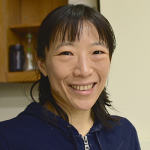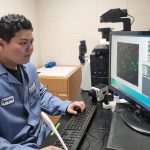Reaching Cancer Moonshot Goals with the Help of Tissue Models

The Cancer Moonshot initiative, launched in 2016 by the United States federal government, aims to reduce cancer death rates by half in the next 25 years. Most knowledge about cancer come from studies that use animal, computer, and in vitro models. While humans are the appropriate models for cancer research there are limitations, and mouse models don’t accurately portray how drugs and diagnostics will interact with humans. Using in vitro models that mimic the human tissue microenvironment is an important tool to develop diagnostic tools and treatment strategies.
While in vitro models have become increasingly sophisticated thanks to stem cell technology, tissue engineering, and microfluidics, not all models follow a universal standard. Peter Searson, core researcher and cofounder of the Institute for NanoBioTechnology, professor of materials science and engineering, and Joseph R. and Lynn C. Reynolds Professor, believes that to reach the Cancer Moonshot goal, there is a need to develop framework and polices that focus on accuracy, qualification, and validation of in vitro models.
Read Searson’s full article in Nature Nanotechnology.





